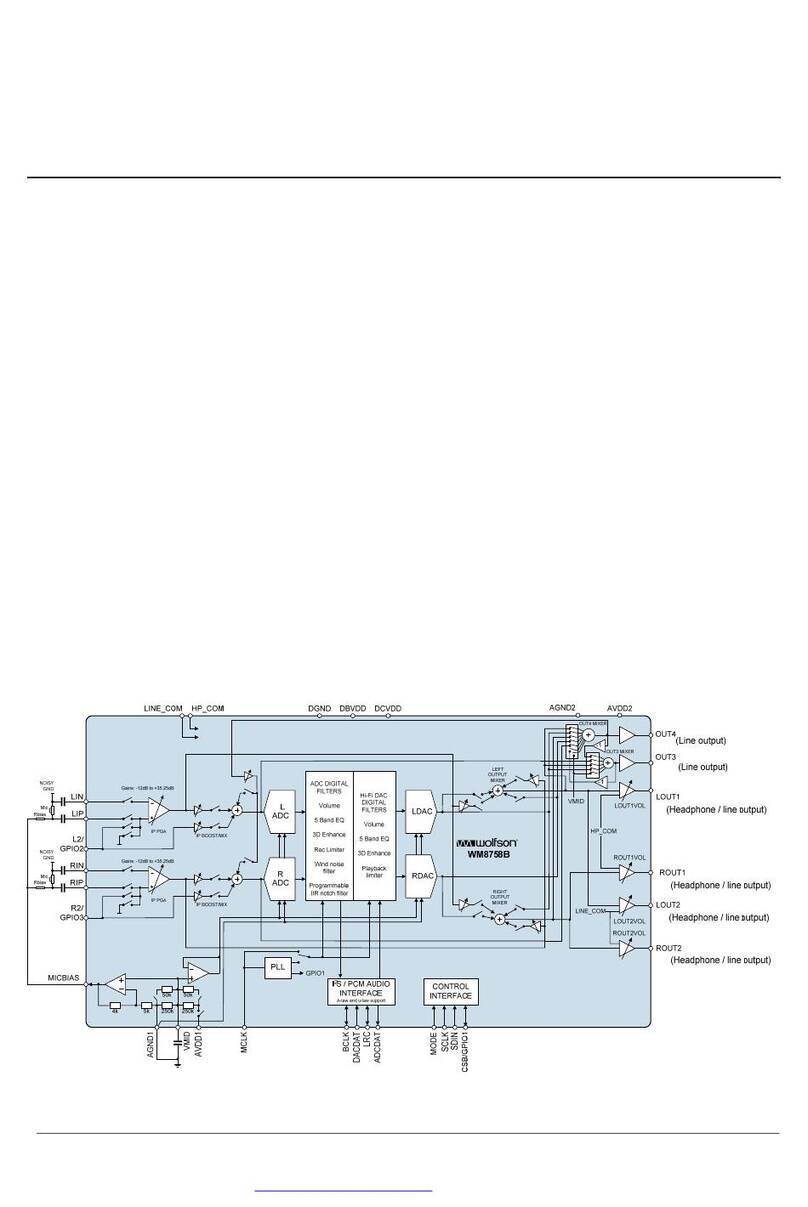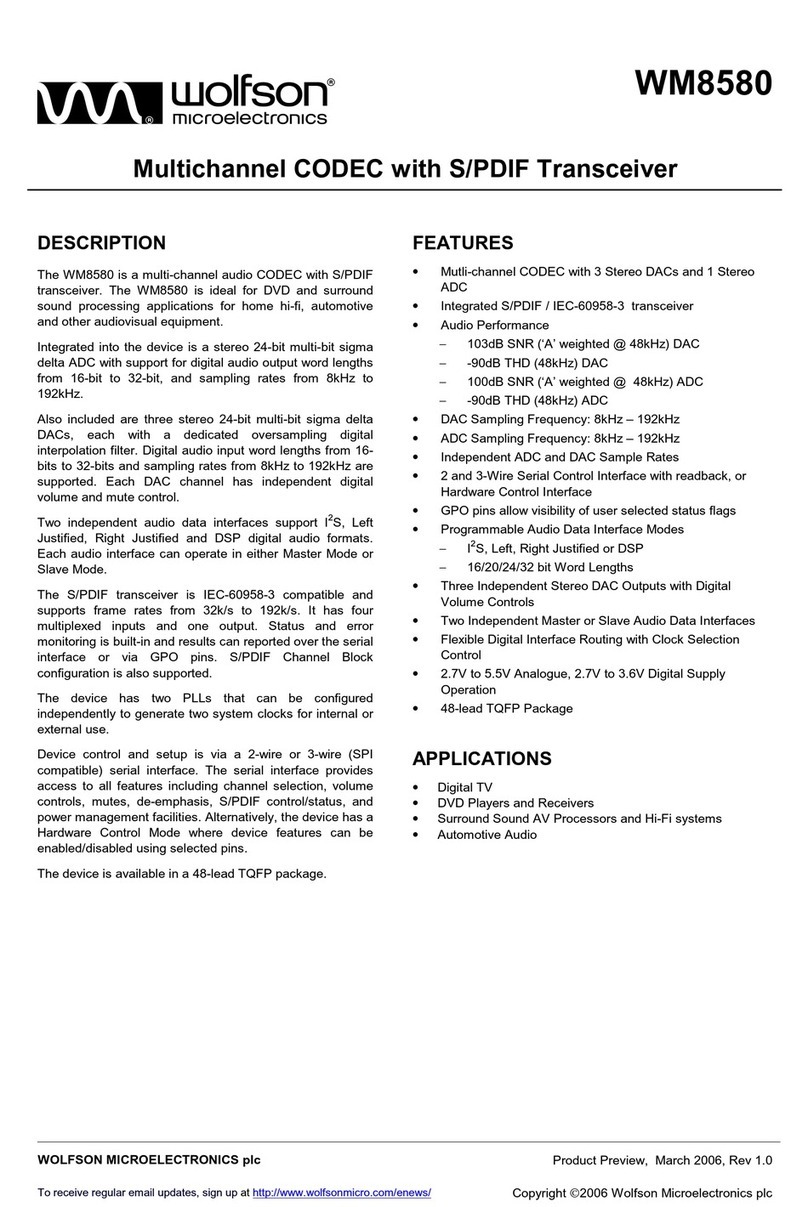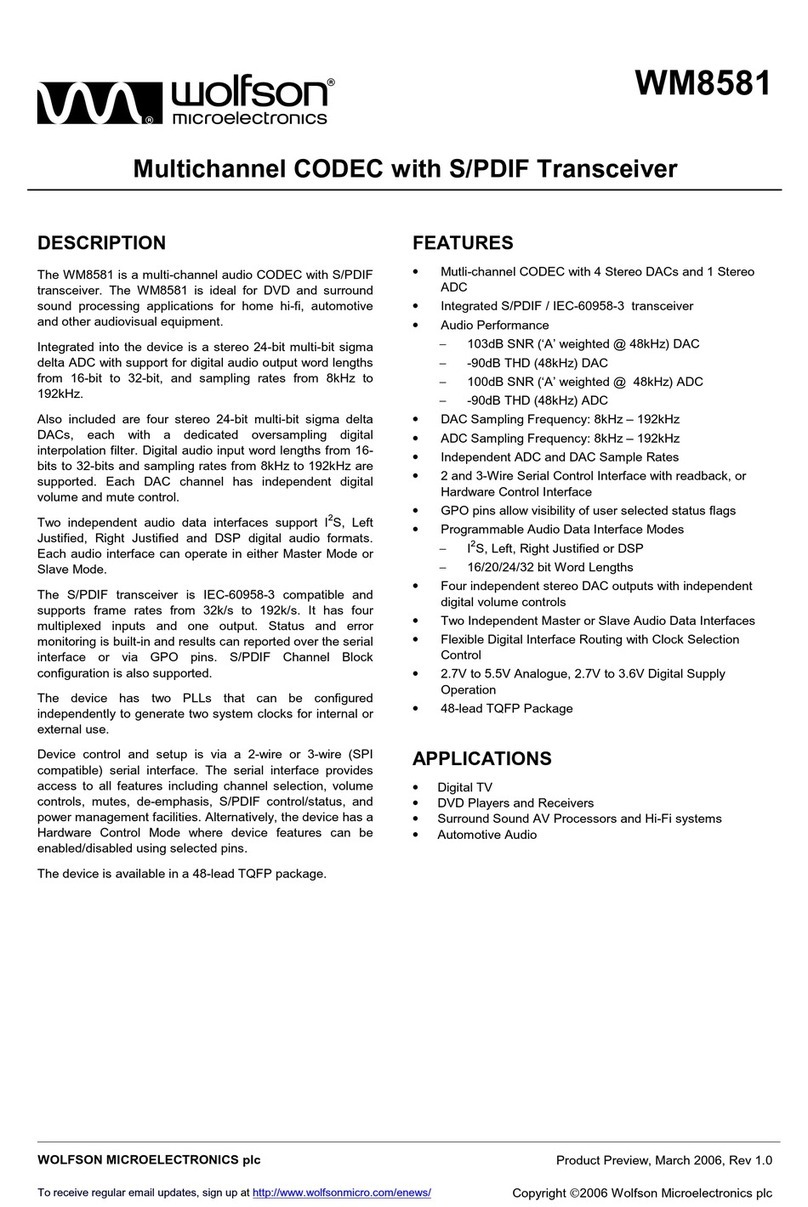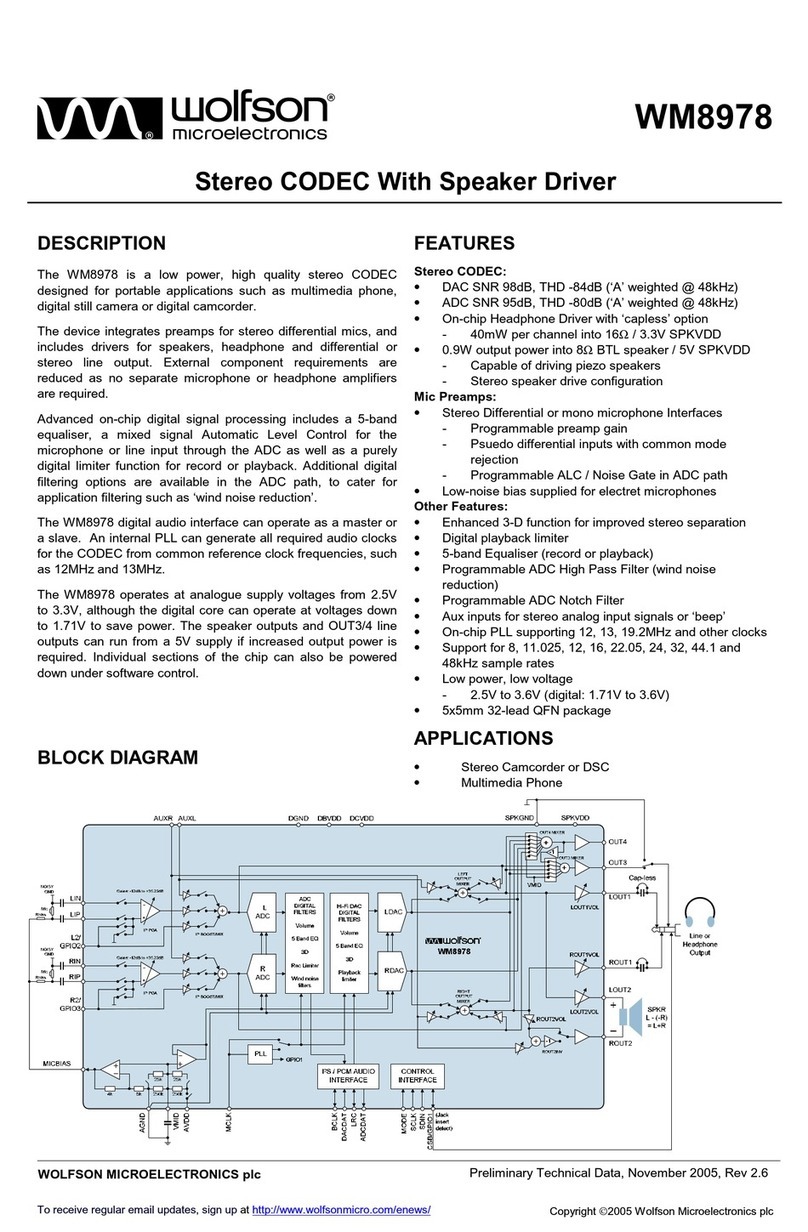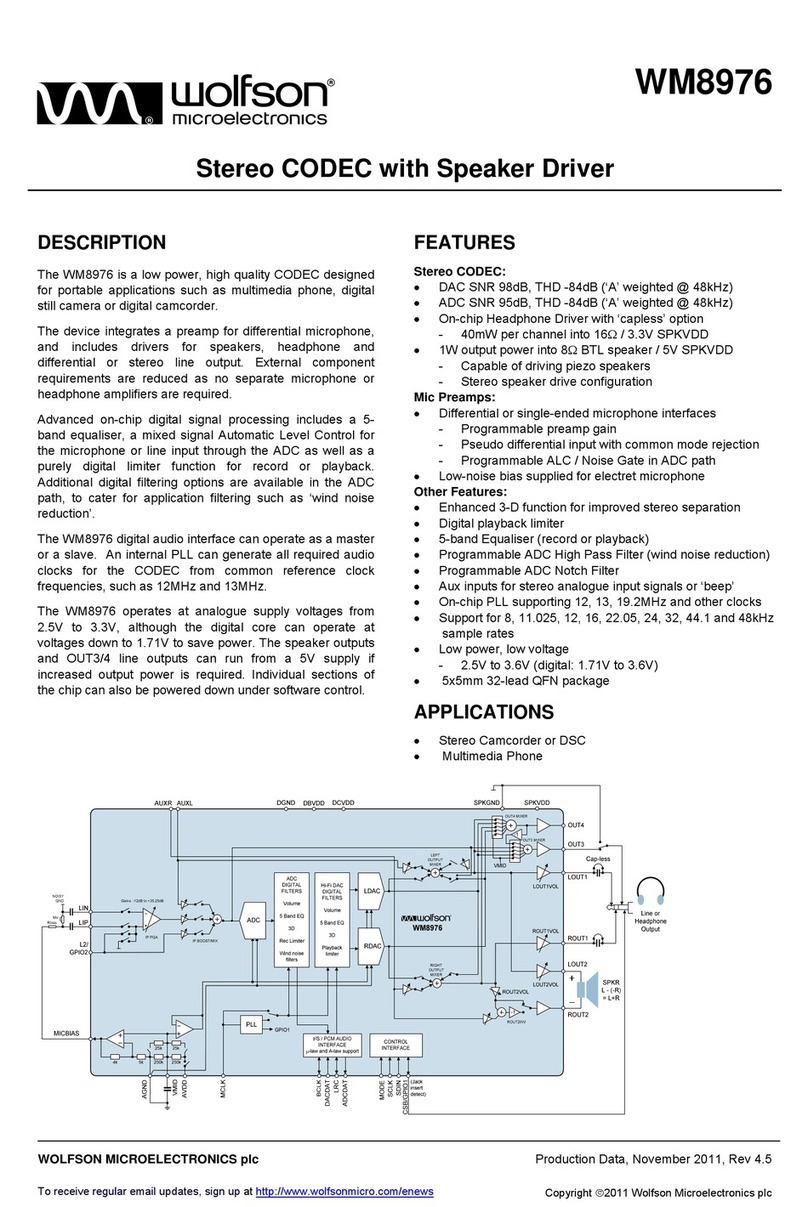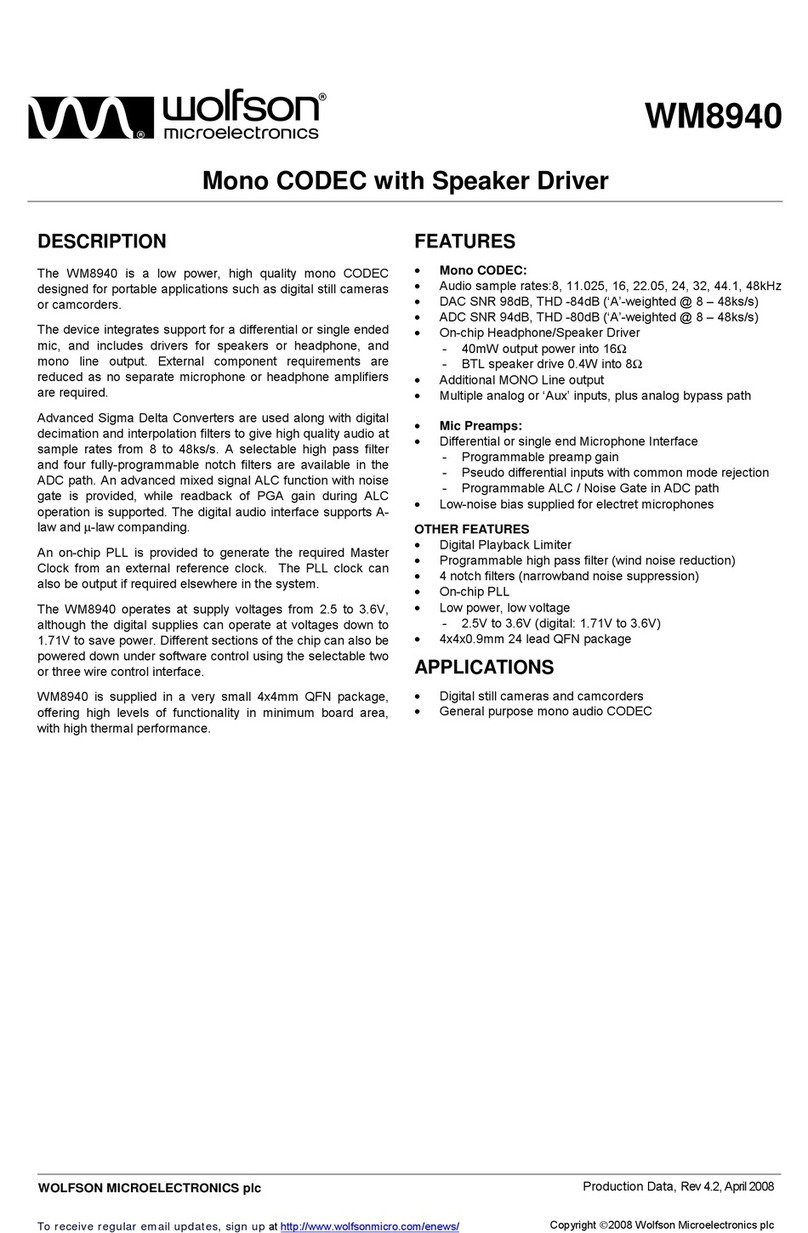
Production Data WM8941
wPD, Rev 4.0, August 2008
3
TABLE OF CONTENTS
DESCRIPTION................................................................................................................ 1
FEATURES..................................................................................................................... 1
APPLICATIONS.............................................................................................................. 1
BLOCK DIAGRAM ......................................................................................................... 2
PIN CONFIGURATION ................................................................................................... 5
ORDERING INFORMATION........................................................................................... 5
PIN DESCRIPTION......................................................................................................... 6
ABSOLUTE MAXIMUM RATINGS ................................................................................. 7
RECOMMENDED OPERATING CONDITIONS.............................................................. 7
ELECTRICAL CHARACTERISTICS .............................................................................. 8
TERMINOLOGY ...................................................................................................................... 10
AUDIO PATHS OVERVIEW ......................................................................................... 11
SIGNAL TIMING REQUIREMENTS ............................................................................. 13
SYSTEM CLOCK TIMING .......................................................................................................13
AUDIO INTERFACE TIMING – MASTER MODE....................................................................13
AUDIO INTERFACE TIMING – SLAVE MODE .......................................................................14
CONTROL INTERFACE TIMING – 3-WIRE MODE................................................................15
CONTROL INTERFACE TIMING – 2-WIRE MODE................................................................16
DEVICE DESCRIPTION ............................................................................................... 17
INTRODUCTION ..................................................................................................................... 17
INPUT SIGNAL PATH .............................................................................................................18
ANALOGUE TO DIGITAL CONVERTER (ADC) .....................................................................24
INPUT LIMITER / AUTOMATIC LEVEL CONTROL (ALC)......................................................29
OUTPUT SIGNAL PATH .........................................................................................................42
VOLUME BOOST ....................................................................................................................44
ANALOGUE OUTPUTS...........................................................................................................46
OUTPUT SWITCH...................................................................................................................49
VIDEO BUFFER ......................................................................................................................52
DIGITAL AUDIO INTERFACES...............................................................................................57
AUDIO SAMPLE RATES.........................................................................................................61
MASTER CLOCK AND PHASE LOCKED LOOP (PLL) ..........................................................62
COMPANDING ........................................................................................................................65
GENERAL PURPOSE INPUT/OUTPUT..................................................................................67
CONTROL INTERFACE..........................................................................................................67
3-WIRE SERIAL CONTROL MODE ........................................................................................69
READBACK IN 3-WIRE MODE ...............................................................................................69
2-WIRE SERIAL CONTROL MODE ........................................................................................70
RESETTING THE CHIP ..........................................................................................................70
POWER SUPPLIES.................................................................................................................70
POWER MANAGEMENT ........................................................................................................73
POP MINIMISATION ...............................................................................................................74
REGISTER MAP........................................................................................................... 75
REGISTER BITS BY ADDRESS .............................................................................................76
DIGITAL FILTER CHARACTERISTICS ....................................................................... 87
TERMINOLOGY ...................................................................................................................... 87
DAC FILTER RESPONSES ....................................................................................................88
ADC FILTER RESPONSES ....................................................................................................88
HIGHPASS FILTER.................................................................................................................89
NOTCH FILTERS AND LOW PASS FILTER...........................................................................90
APPLICATIONS INFORMATION ................................................................................. 92













